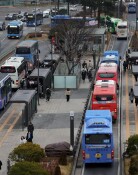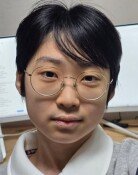Pres. Moon says S. Korea should lead global semiconductor supply chain
Pres. Moon says S. Korea should lead global semiconductor supply chain
Posted April. 16, 2021 07:28,
Updated April. 16, 2021 07:28
South Korean President Moon Jae-in held an extended economic ministerial meeting with CEOs of large companies, including Samsung Electronics and SK Hynix, at the Blue House. The meeting was intended to discuss strategies for major industries but focused on the semiconductor sector. “The semiconductor industry is a key national strategic industry on which the South Korean economy’s present and future depend,” said President Moon. “We should continue to lead the global semiconductor supply chain.” His remarks make sense, but the key is whether there are strategies, technologies, and strong determination to proceed.
U.S. President Joe Biden is putting pressure on South Korean companies’ investment in the U.S. Chinse President Xi Jinping also expressed semiconductor-related aspirations and asked for South Korea’s cooperation. The U.S. is a dominant player in both technology and market leadership. China accounted for about 40 percent of South Korea’s semiconductor export in volume. The South Korean government and companies both need detailed strategies to maintain their global market share without provoking either party.
“System semiconductors are also growing as a major export item along with memory semiconductors,” said President Moon. However, South Korea’s market share in system semiconductors has remained around three percent in the last decade, while its first ranked position in the global memory market is becoming volatile. Samsung Electronics’ DRAM market share decreased by five percentage points in the last five years. In the NAND sector, U.S.-based Micron Technology announced that it will launch the seventh generation product ahead of South Korean companies.
Companies attending the meeting requested talent development and investment support. About 1,500 new technology talents are required annually for the semiconductor sector for the next decade. However, student quotas for major universities’ semiconductor departments are limited by the 40-plus-year-old Seoul Metropolitan Area Readjustment Planning Act. While competing countries are pouring in an astronomical amount of money into semiconductor companies with tax deductions and subsidies, support from the South Korean government is rather insignificant.
Some say that South Korea has time to widen the technology gap while the U.S. is keeping in check China, which is chasing to catch up with South Korea. Only advanced technologies can guarantee companies’ survival in global competition. South Korean companies should widen the memory technology gap while focusing all capabilities to close the gap with competitors in the system semiconductor sector. The government should also bring forth practical support measures, rather than something to take credit for. A sense of crisis that the country can become a loser in the sector without focused efforts now is needed more than ever.







